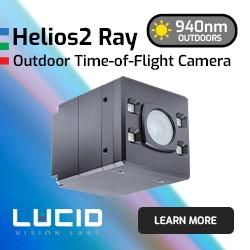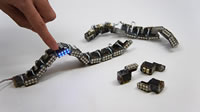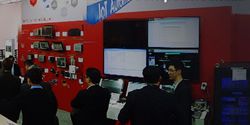The Art of Building a Robot
Sensors and gripper arms can simply be attached and removed as needed. You dont even have to be a specialist to quickly and easily replace a defective part, which makes the robots extremely flexible and economical to operate.
MIT's Modular Robotic Chain Is Whatever You Want It to Be
Evan Ackerman for IEEE Spectrum: As sensors, computers, actuators, and batteries decrease in size and increase in efficiency, it becomes possible to make robots much smaller without sacrificing a whole lot of capability. There’s a lower limit on usefulness, however, if you’re making a robot that needs to interact with humans or human-scale objects. You can continue to leverage shrinking components if you make robots that are modular: in other words, big robots that are made up of lots of little robots.
In some ways, it’s more complicated to do this, because if one robot is complicated, robots tend to be complicated. If you can get all of the communication and coordination figured out, though, a modular system offers tons of advantages: robots that come in any size you want, any configuration you want, and that are exceptionally easy to repair and reconfigure on the fly.
MIT’s ChainFORM is an interesting take on this idea: it’s an evolution of last year’s LineFORM multifunctional snake robot that introduces modularity to the system, letting you tear of a strip of exactly how much robot you need, and then reconfigure it to do all kinds of things. Cont'd...
RENCO Modular Rotary Encoders Ideal for Mobile Robots
The RENCO encoders slim and lightweight design allows motor designers more flexibility, especially in these applications where space and weight is critical.
Echoing Government's Productivity 4.0, IoT Automation Boosts Taiwan's Competitiveness
Facing challenges of labor shortages and aging labor forces, Taiwan's Ministry of Economic Affairs is implementing "Productivity 4.0" to stimulate economic growth and upgrade industries.
Records 1 to 4 of 4
Featured Product

Helios™2 Ray Time-of-Flight Camera Designed for Unmatched Performance in Outdoor Lighting Conditions
The Helios2 Ray camera is powered by Sony's DepthSense IMX556PLR ToF image sensor and is specifically engineered for exceptional performance in challenging outdoor lighting environments. Equipped with 940nm VCSEL laser diodes, the Helios2 Ray generates real-time 3D point clouds, even in direct sunlight, making it suitable for a wide range of outdoor applications. The Helios2 Ray offers the same IP67 and Factory Tough™ design as the standard Helios2 camera featuring a 640 x 480 depth resolution at distances of up to 8.3 meters and a frame rate of 30 fps.

.jpg)

